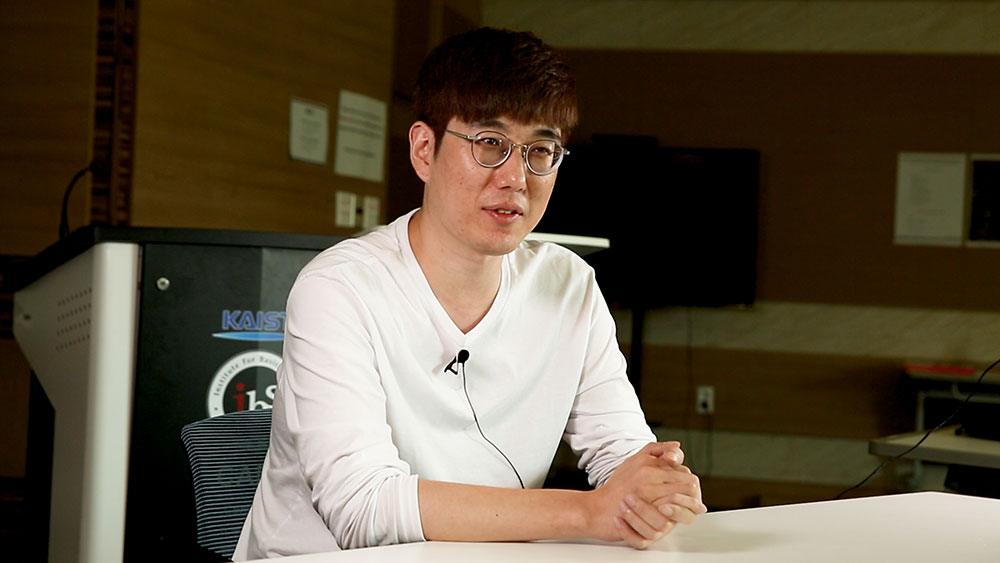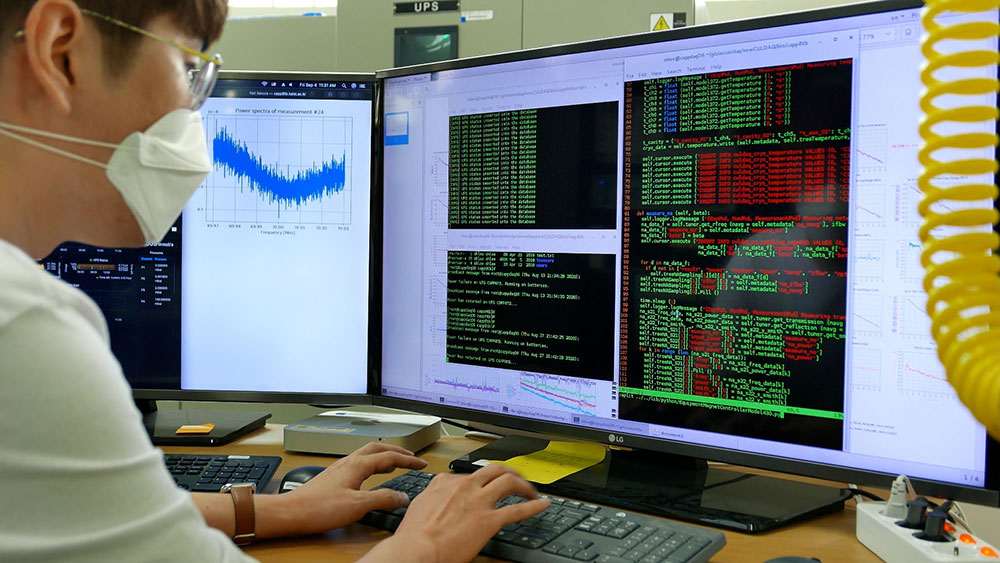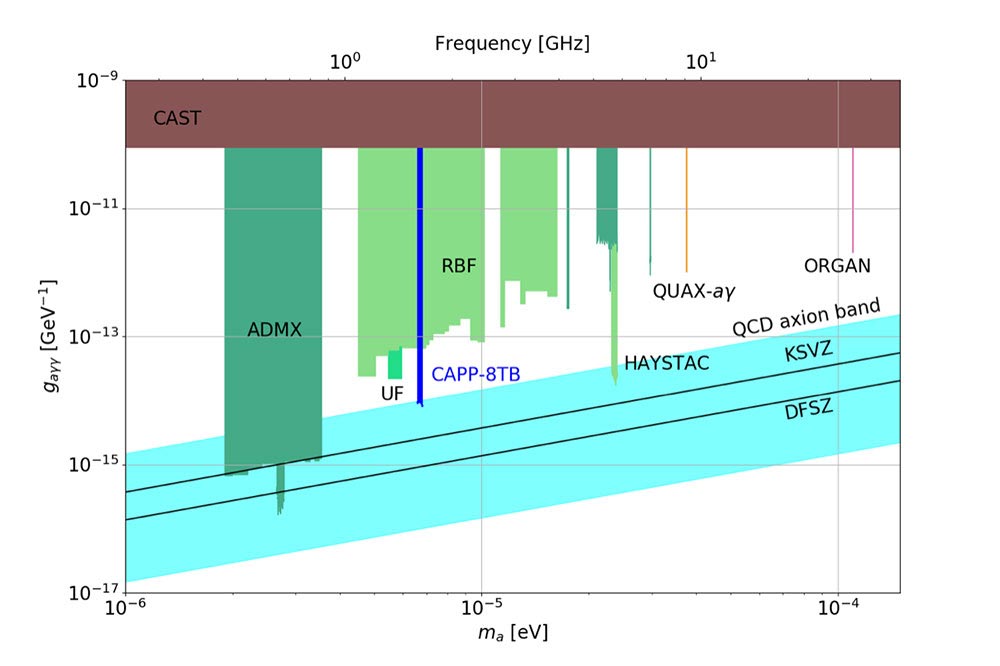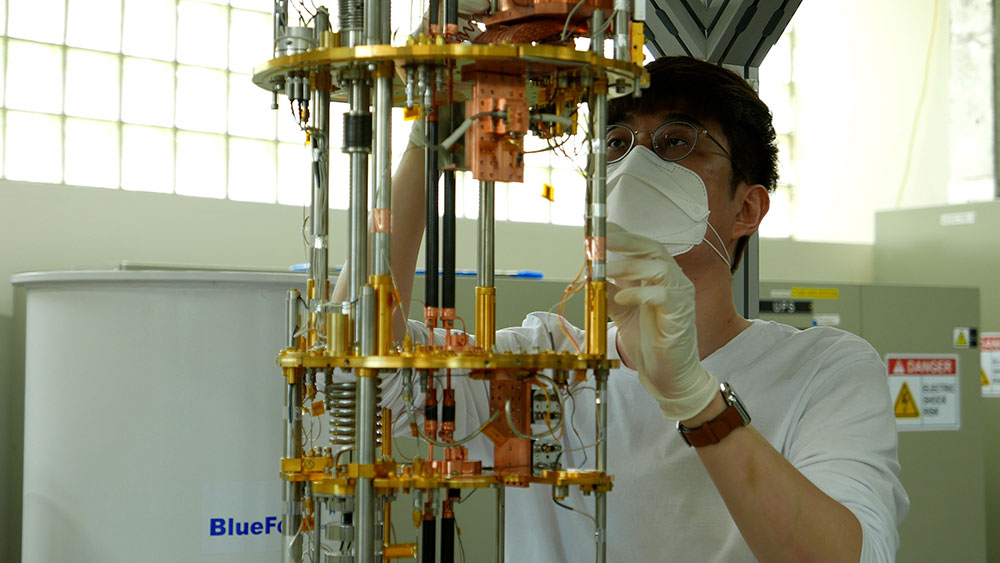주메뉴
- About IBS 연구원소개
-
Research Centers
연구단소개
- Research Outcomes
- Mathematics
- Physics
- Center for Underground Physics
- Center for Theoretical Physics of the Universe (Particle Theory and Cosmology Group)
- Center for Theoretical Physics of the Universe (Cosmology, Gravity and Astroparticle Physics Group)
- Dark Matter Axion Group
- Center for Artificial Low Dimensional Electronic Systems
- Center for Theoretical Physics of Complex Systems
- Center for Quantum Nanoscience
- Center for Exotic Nuclear Studies
- Center for Van der Waals Quantum Solids
- Center for Relativistic Laser Science
- Chemistry
- Life Sciences
- Earth Science
- Interdisciplinary
- Center for Neuroscience Imaging Research (Neuro Technology Group)
- Center for Neuroscience Imaging Research (Cognitive and Computational Neuroscience Group)
- Center for Algorithmic and Robotized Synthesis
- Center for Genome Engineering
- Center for Nanomedicine
- Center for Biomolecular and Cellular Structure
- Center for 2D Quantum Heterostructures
- Center for Quantum Conversion Research
- Institutes
- Korea Virus Research Institute
- News Center 뉴스 센터
- Career 인재초빙
- Living in Korea IBS School-UST
- IBS School 윤리경영


주메뉴
- About IBS
-
Research Centers
- Research Outcomes
- Mathematics
- Physics
- Center for Underground Physics
- Center for Theoretical Physics of the Universe (Particle Theory and Cosmology Group)
- Center for Theoretical Physics of the Universe (Cosmology, Gravity and Astroparticle Physics Group)
- Dark Matter Axion Group
- Center for Artificial Low Dimensional Electronic Systems
- Center for Theoretical Physics of Complex Systems
- Center for Quantum Nanoscience
- Center for Exotic Nuclear Studies
- Center for Van der Waals Quantum Solids
- Center for Relativistic Laser Science
- Chemistry
- Life Sciences
- Earth Science
- Interdisciplinary
- Center for Neuroscience Imaging Research (Neuro Technology Group)
- Center for Neuroscience Imaging Research (Cognitive and Computational Neuroscience Group)
- Center for Algorithmic and Robotized Synthesis
- Center for Genome Engineering
- Center for Nanomedicine
- Center for Biomolecular and Cellular Structure
- Center for 2D Quantum Heterostructures
- Center for Quantum Conversion Research
- Institutes
- Korea Virus Research Institute
- News Center
- Career
- Living in Korea
- IBS School
News Center
| Title | Searching for the One Piece of Particle Physics | ||||
|---|---|---|---|---|---|
| Name | Communication Team | Registration Date | 2021-01-15 | Hits | 3339 |
| att. |
 thumb.jpg
thumb.jpg
|
||||
Searching for the One Piece of Particle PhysicsAdventure stories involving the search for a legendary treasure of questionable existence is a popular recurring theme in many works of literature. One Piece is a globally popular Japanese anime, where its protagonist Monkey D. Luffy embarks on a journey in search of a legendary treasure, One Piece. Likewise in the 2016 Disney film Moana, the protagonist sets sail in search of a legendary demigod Maui. Like Luffy and Moana, there are numerous adventurers within the field of particle physics who search for unknown treasures. Among them are those who search for the mysterious ‘axions’, which are one of the dark matter candidates. We decided to interview Dr. LEE Soohyung, a Research Fellow in the Institute for Basic Science (IBS) Center for Axion and Precision Physics Research (CAPP), regarding his search for the elusive particle.
Axions are hypothetical particles that have been proposed as a solution to various unsolved areas of theoretical physics. Researcher Lee stated, “One of these problems is the baryon asymmetry problem. While an equivalent amount of matter and antimatter should have been created in The Big Bang, the observable universe is predominantly composed of matter. One mechanism which can explain the different rates of production between matter and antimatter is the violation of the CP symmetry.” The physical laws of the universe are applied equally when the particle is interchanged with its antiparticle (charge), or if it undergoes a parity inversion (parity). These are referred to as C symmetry and P symmetry, respectively, and their violation is referred to as CP violation. While CP violation has been successfully explained in the electroweak theory, no case of CP violation has ever been observed in any past experiments which involve only strong interaction. Such preservation of CP symmetry in quantum chromodynamics is referred to as the Strong CP Problem. Peccei-Quinn theory is the most well known proposed solution to the Strong CP Problem. The axion is one of the treasures that are sought after by many physicists. Lee said, “Peccei-Quinn theory postulates the existence of a hypothetical particle named axion. Since axion is difficult to detect, it is a promising dark matter candidate if it is within a certain mass range. In essence, axions serve as a simultaneous solution for both Strong CP Problem and dark matter, which are two of the most important unsolved problems in modern physics.” In order to emphasize its potential to clean up all of the messy problems in physics, axion was named after a brand of laundry detergent.
This valuable treasure has been garnering greater attention within the past 10 years. A sudden wave of interest has been fueled by the discovery of the Higgs boson in 2012. Since the mass of the Higgs boson sets the boundaries of the Peccei-Quinn scale, which determines the axion properties and dark matter abundance, this has led to a stronger belief in the existence of axions. The researchers utilize a method known as a microwave cavity experiment to search for axions. This experiment exploits the axion’s property to undergo resonant conversion into a microwave signal under a strong magnetic field. The detection of such a signal would hint towards the existence of axions, with its frequency being equivalent to its mass. However, as the mass of the axion is unknown, the physicists must run the detection experiment across a wide range of electromagnetic wavelengths similar to tuning the radio dial. The search range is set in accordance with the possible mass window for axions to serve as a dark matter candidate, which is dictated by the observations in cosmology and astrophysics. Increasing the sensitivity of the experiment results in an exponentially longer search duration and consequently a narrower search range.
The experiments conducted by Lee along with his colleague KO Byeong Rok have searched for the range in between 1.60~1.65GHz., with a sufficient sensitivity to approach the QCD band corresponding to the theoretical range of mass and coupling constant of axions. “The fact that we have managed to explore the areas within the QCD band is a highly promising result. Currently, the most advanced effort to find the axion is the Axion Dark Matter eXperiment (ADMX) in the US, which has been ongoing for 30 years. Since our search has managed to reach the QCD band within such a short period of time, this serves as a first stepping stone for our search to approach and surpass the achievements of the ADMX.” How long would it take to search across the entirety of the QCD band? Lee responded that it would take many decades, or perhaps centuries even if we employ all of the currently existing technologies. The unexplored range of wavelength across the QCD band is vast, and the time required to increase the sensitivity of the experiment to reach the lower limits of the QCD band increases the search duration exponentially. Lee stated, “Our research also involves the development of efficient ways to dramatically increase the experimental performance within a given time frame. It is possible that the discovery of a new trick or a methodology can result in a paradigm shift in the axion search experiment. If we account for these future developments, the whole search might be completed much sooner than currently predicted.”
The research center recently installed a 12 Tesla superconducting magnet. As the strength of the converted signal is proportional to the square of the magnetic field applied, employing a stronger magnet would decrease the sensitivity of the experiment required to reach the QCD band. Since such strong magnets are quite costly, it is impossible to overcome all of the problems using stronger magnets alone. However, the researchers in CAPP hope that the deployment of the magnet would greatly aid in their ongoing search for the axions. One important difference between the pirates searching for One Piece and the physicists searching for axion is that the latter is a collaborative effort and not a competition. The physicists are interested in the proof of the axion’s existence and its properties more than who discovers them first. In a concluding remark, Lee added, “It would ideal if I could be the one to find some new particles as well as axion, but I would be happy if I could be a researcher who can make a significant contribution to the discovery. For now, I would like to focus on the axions.” |
|||||
| Next | |
|---|---|
| before |
- Content Manager
- Public Relations Team : Yim Ji Yeob 042-878-8173
- Last Update 2023-11-28 14:20















